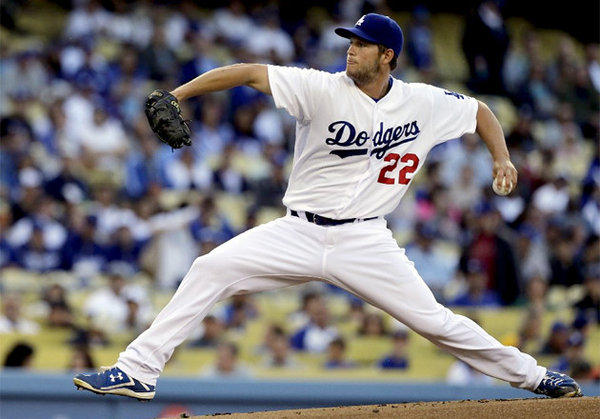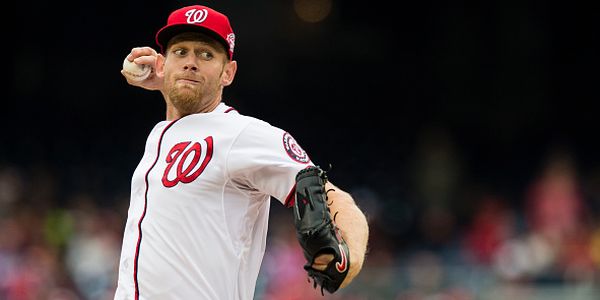BABIP Monologues Episode 2: Cole Hamels and the First Pitch Fastball Project

 Cole Hamels might be perhaps my favorite pitcher in Major League Baseball. His awful first half to date pains me every night. Hamels was of course my Cy Young pick for the National League, and also was my #3 Starting Pitcher in the preseason – behind Clayton Kershaw and Stephen Strasburg. Hamels has one of the best changeups in baseball and while he’s had his ups and downs with that pitch in 2013, his main problem has been all of his fast stuff.
Cole Hamels might be perhaps my favorite pitcher in Major League Baseball. His awful first half to date pains me every night. Hamels was of course my Cy Young pick for the National League, and also was my #3 Starting Pitcher in the preseason – behind Clayton Kershaw and Stephen Strasburg. Hamels has one of the best changeups in baseball and while he’s had his ups and downs with that pitch in 2013, his main problem has been all of his fast stuff.
Cole’s velocity was worst unsurprisingly during his first month of the season when his fastball and sinker came in at 92.08 and 92.12 miles per hour, respectively. In addition, his cutter came in at 88.27 miles per hour.
Velocity is not the issue for Cole overall though, as the velocity on his sinker (it’s really a two-seam fastball) is at one of the high points of his career at the end of this current three-month sample.
A while back I wrote this article on first pitch strikes and their importance. Suffice it to say that Cole Hamels should’ve been included in that article. Through 0-1 counts batters have a .224 wOBA against Cole, compared to a .392 mark when he starts the pitch with a first pitch ball.
Unfortunately there’s worse news.
Hamels has had trouble in the last three years with batters jumping all over his first pitch fastball. This year has been an atrocity in that department. Furthermore, the cutter and sinker have jumped into the fray as well. Let’s have a look at how batters have fared against his hard stuff when it’s the first pitch of the at-bat.
*Note the slash lines are BAA/Slugging/Isolated Power Against (BAA minus Slugging), and BABIP
| Year | Fastball | Cutter | Sinker |
| 2011 | .276/.535/.259/.236 | .310/.414/.103/.310 | N.A. |
| 2012 | .296/.636/.341/.225 | .286/.476/.191/.250 | .273/.546/.273/.200 |
| 2013 | .583/1.292/.708/.524 | .571/1.000/.429/.571 | .500/1.000/.500/.500 |
Yes, you saw that correctly. Batters are hitting an absolutely absurd .583 and slugging 1.292 (that’s an OPS of 1.875) on first pitch fastballs in a 45 at-bat sample! And for those of you keeping score at home, Hamels has thrown 334 first pitch fastballs, sinkers or cutters. Those pitches have been put in play at a rate of 11.01 percent this season, and batters are hitting .568 and slugging 1.270 on those first pitches!!!
Those numbers are simply staggering, and it begs the question: What is the average rate, or close approximation for first pitch strike success rate with hard stuff? Only aces will be put into account at first: League Average for the First Pitch (all first pitches not just fastballs) is a batting average of .334 and a slugging percentage of .548
First, I will explain my brand new created metric from scratch: Success Rate for First Pitch Fastballs:
Formula: {(AB Ended on First Pitch Fastball – (AB Ended on First Pitch Fastball x (SLG x 2))) + (First Pitch Fastballs Thrown x (Strike % /100)) + (First Pitch Fastballs Thrown x (Foul Ball % /100))}
Rationalization and Explanation of Formula:
In order to determine the first pitch fastball success rate, we must take the Ball %, Strike %, Foul %, and Ball in Play % (all which add up to around 100%) – thankfully the data falls within a 97.5% confidence interval, with those four percentages never adding up to less than 98%.
The idea is simple: Successes are as follows: A strike, a foul ball (kept separately by brooksbaseball), and an out. Failures are a first pitch ball or a hit, with extra base hits being “super failures” if you will.
Successes are determined by taking the number of first pitch fastballs thrown and multiplying it individually by each non-weighted Success type: Strikes and Foul Balls. – this explains portion of the formula that says “(First Pitch Fastballs Thrown x (Strike % /100)) + (First Pitch Fastballs Thrown x (Foul Ball % /100))}”
Let’s run through this exercise with our pitcher of study Cole Hamels
- Total First Pitch Fastballs Thrown = 236
- Strike % = 45.34 and Foul % = 11.86
- To determine the number of strikes he has thrown: 236 x .4534 = 107 strikes
- To determine the number of foul balls induced: 236 x .1186 =28 foul balls
- So far, Hamels has 135 successes:
Recall now that we must add in balls in play, which is the tricky part.
I decided I simply could not give equal weight to a base hit and a called strike. In order to punish pitchers that have their first pitch fastballs get hammered, I decided that the number of balls in play (the remaining success portion) would be determined by slugging percentage allowed and not out recording ability.
Since scoring runs is the name of the game, we need to make slugging a “super failure”. Therefore we take the slugging percentage allowed and multiply it by two, and then multiply it by the number of at-bats.
As previously mentioned, Hamels allows an astronomically high 1.292 slugging percentage on his first pitch fastball. Our final calculation: this covers the beginning of the formula “{(AB Ended on First Pitch Fastball – (AB Ended on First Pitch Fastball x (SLG x 2)))”
- (24 x (1.292 x 2)) = 62.016
- 62.016 in this instance is a calculated number of failures. See how much giving up extra base hits hurts your success rate? In only 24 at-Bats, Hamels registered 62 failures.
- In order to account for the 10.17 percent ball in play outcome, now we subtract 62 from 24 and get “(-38)”
I imagine some of you are confused after the last tricky portion of the formula: Here is a breakdown:
| Hamels | 31.36% Balls | 45.34% Strikes | 11.86% Fouls | 10.17% BIP |
| Successes | 0 | 107 | 28 | -38 |
- 31.36 + 45.34 + 11.86 + 10.17 = 98.73
- 107 + 28 – 38 = 97
- 97/236 = 41.1% – 236 is total number of first pitch fastballs thrown
- 41.1% * 1.0127 = 41.6% – 1.1027 = (1+ (1-.9837))
Now the table of Aces: I will show the data inputted so you can compare and contrast my Success Rate formula’s output to the non-input skills the pitch possesses (like Ball in Play distribution).
| Pitcher | Success % | GB% | LD% | FB% | PU% | BAA/SLUG/ISO | Foul + Str% |
| Clayton Kershaw | 59.99% | 40.85% | 21.13% | 23.94% | 14.08% | .236/.278/.042 | 48.29% |
| Felix Hernandez *Four Seam | 59.27% | 18.75% | 31.25% | 43.75% | 6.25% | .412/.529/.117 | 60.00% |
| Adam Wainwright*Two Seam* | 57.99% | 35.00% | 30.00% | 15.00% | 20.00% | .200/.250/.050 | 52.07% |
| Cliff Lee *Two Seam* | 56.05% | 36.36% | 27.27% | 30.30% | 6.06% | .382/.529/.147 | 56.66% |
| Yu Darvish *Cutter* | 55.35% | 41.67% | 16.67% | 33.33% | 8.33% | .333/.583/.250 | 57.28% |
| Matt Harvey | 54.07% | 27.78% | 19.44% | 38.99% | 13.89% | .389/.583/.194 | 55.50% |
| Jordan Zimmermann | 53.50% | 55.26% | 18.42% | 18.42% | 7.89% | .275/.475/.200 | 50.76% |
| MaxScherzer | 52.93% | 14.29% | 23.81% | 42.86% | 19.05% | .333/.524/.191 | 53.36% |
| Justin Verlander | 49.41% | 29.17% | 29.17% | 37.50% | 4.17% | .261/.652/.391 | 51.33% |
| Matt Cain | 45.68% | 17.24% | 17.24% | 51.72% | 13.79% | .258/.581/.323 | 48.38% |
| Cole Hamels | 41.60% | 8.33% | 37.50% | 50.00% | 4.17% | .583/1.292/.708 | 57.20% |
*Darvish and Wainwright both throw lots of cutters and two seam fastballs on the first pitch. We chose their most successful pitch.
Outside of the obvious fact that the Success Rate metric has nearly ranked all of these aces in terms of how they are producing this season, it bears noticing just how often the misuse of the term unlucky comes up. Cole Hamels, Justin Verlander and Matt Cain have been by far the most disappointing aces in the 2013 season. Notice how few pop-ups Hamels and Verlander are getting, as they have the two highest ISO against numbers amongst all the aces. In addition, Hamels’ 8% ground ball rate is completely absurd and is reflective of how much first pitch fastball hard contact he is yielding.
Also, my boy Jordan Zimmermann, who I had 7th in my preseason starting pitcher rankings, shows all of us that strikeouts are not the end all be all. He has a more effective first pitch fastball than flame-throwing strikeout machines Max Scherzer and Matt Harvey.
It’s still early for Cole Hamels and Justin Verlander and Matt Cain to turn things around. They shouldn’t continue to be this bad. But monitoring first pitch fastball success from now until the rest of the season is an excellent exercise for all pitchers.





1 Comment
No love for Jered Weaver? Come on, man! : )